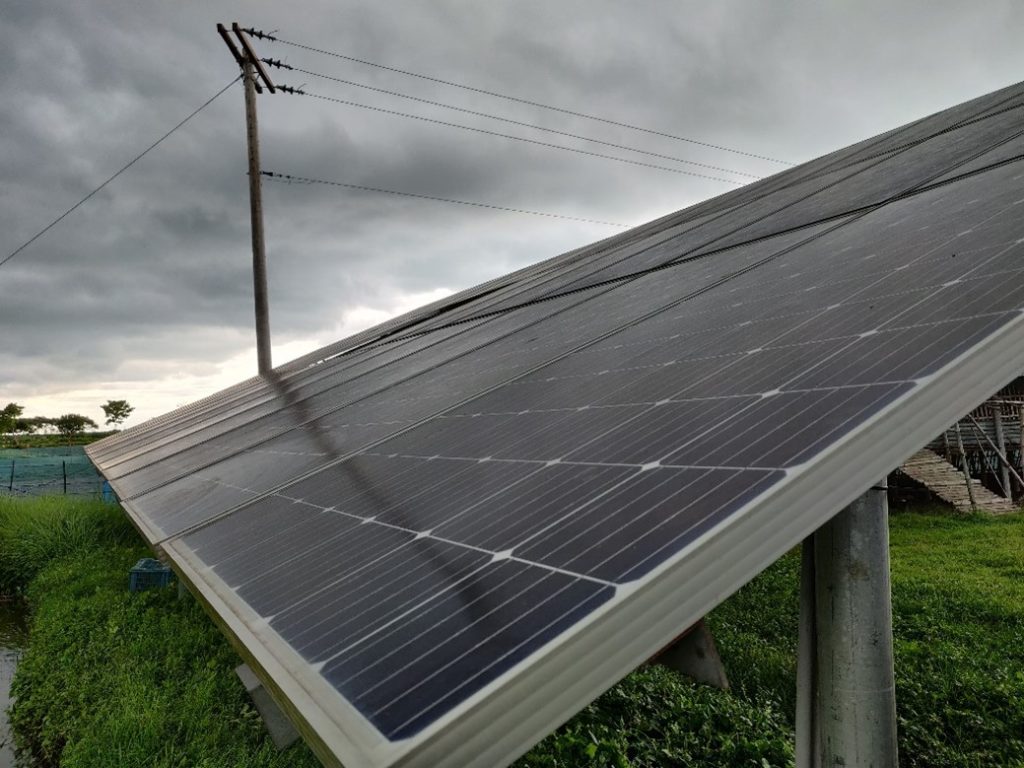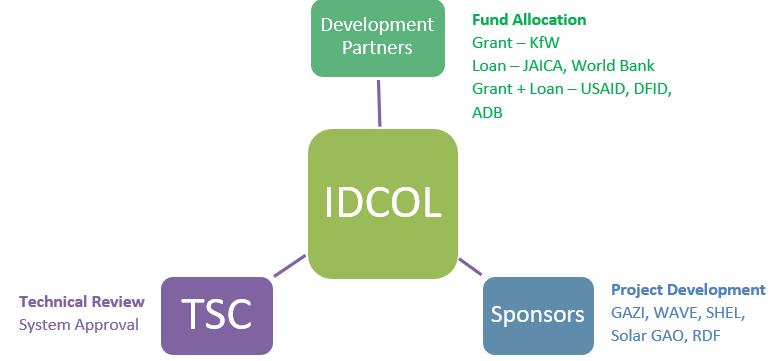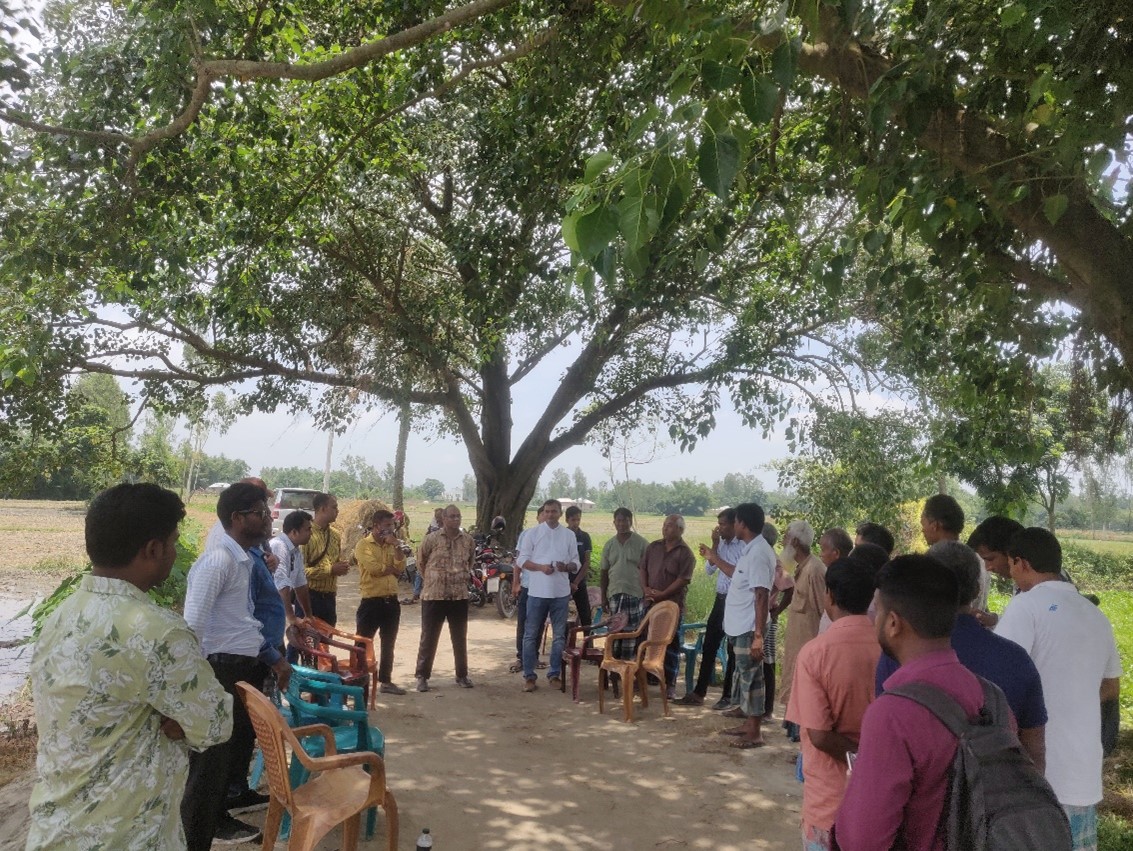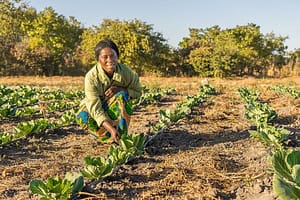By
Bangladesh’s farmers depend on irrigation powered by imported diesel. With the rising cost of fossil fuel, the diesel-powered irrigation system is becoming increasingly unaffordable. According to Bangladesh’s Nationally Determined Contributions (NDCs), the country is committed to reducing Greenhouse Gas (GHG) emissions by 5% (un-conditionally) by 2030. Bangladesh lacks natural resources in the country for renewable energy to meet its NDC targets. But solar Irrigation has shown great potential to replace the existing diesel-powered pumps.

To tackle the high upfront cost of Solar Irrigation Pumps (SIPs), Infrastructure Development Company Limited (IDCOL) has implemented the solar irrigation program with a fee-for-service model. IDCOL is a government-owned financial company and the largest financier for solar irrigation pumps (SIPs) and targets to install 50,000 SIPs by 2027[1].
There are four main stakeholders for this project: (i) Development Partners – These are divided into development partners that allocate funds for the GRANT (KfW), LOAN (JAICA, World Bank), and GRANT + LOAN (ADB, USAID, etc.). The Development Partners provides Grant/Loan to IDCOL. (ii) IDCOL – its primary role is to disburse the fund in the fee-for-service model after the project is approved. (iii)
Sponsors – They develop and design the project per IDCOL technical standards and install the SIPs. There are currently 29 registered Sponsors for IDCOL. Sponsors could be either an NGO or a private sector. (iv) Technical Standard Committee (TSC) – It approves the project’s design before the IDCOL can disburse the fund. IDCOL approaches the TSC to verify if the proposed systems meet the technical standards.
In IDCOL’s fee-for-service model, 50% of the project cost comes as a Grant from a development partner. The remaining 35% is provided as a loan from IDCOL. The Sponsors inject the remaining 15% of the project cost as equity. After the installation is completed, they sell the irrigation water to the farmers, and the income generated from irrigation water sales is used to pay debt service payments.

From 2010 to 2014, 15-20 pilots were implemented by IDCOL under this model. According to IDCOL, there are currently 1,514 SIPs (~40MWp) installed, and IDCOL now has approved additional 1,630 SIPs (~45MWp). The target set by IDCOL is to install 10,000 SIPs by 2025[2].
In Bangladesh, these SIPs are operational mainly for four months (for the boro season) and remain primarily unused for the rest of the year. Hence, the capacity utilization factor (CUF) is very low when considering the massive investment needed for these projects.
The solar panels of these SIPs are often oversized to improve the pump’s performance throughout the day. Hence there is a need to improve the CUF for these SIPs and utilize the excess energy when these SIPs are not used. IWMI, through the Swiss Agency for Development and Cooperation (SDC), funded Solar Irrigation for Agriculture Resilience (SoLAR) project and is implementing demonstration pilots on grid-connected SIP in Bangladesh. IDCOL is the IWMI’s partner in Bangladesh.
In July, IWMI’s team visited Bangladesh to assess the grid integration pilot’s identified site and monitor the grid integration progress of these sites. The team visited ten sites for three different sponsors (GAZI, WAVE, and SHELL). These sites were in Dinajpur district (4), Jhenaidah District (2), Chauadanga District (1), Panchagarh District (2), and Thakurgaon District (1). Two projects implemented by SHELL also has grid integration completed, while other sites are at various stage of implementing grid integration.
One of the objectives of the site visit was to interact with the Bangladeshi farmers to understand their perception of IDCOL’s SIP program. Our interaction with the farmers from all the sites generally provided a positive outlook of the IDCOL’s SIP program as the cost of Irrigation through SIP was much cheaper than the older Diesel pump irrigations. The Farmers didn’t have to worry about the O&M of the SIP as the projects are implemented in a fee-for-service model, and the Sponsors are responsible for taking care of the system. However, few farmers have retained their diesel pumps as a backup measure in case the SIP breakdowns. Many farmers have moved their diesel pumps to other plots where irrigation water through SIP wasn’t available.












